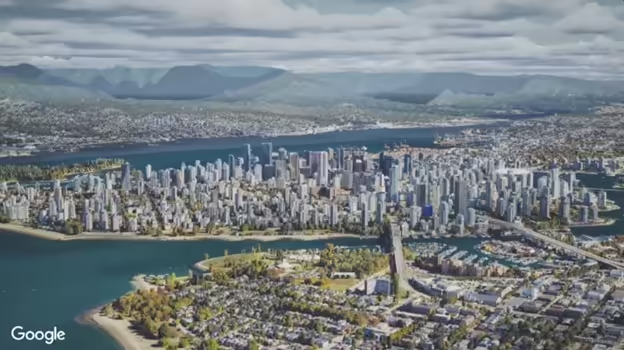At Bentley’s annual Year in Infrastructure event, the company announced that, in the spirit of openness, it is partnering with Google to bring geospatial context and capabilities to infrastructure. As a result of this collaboration, Google’s extensive 2D and 3D geospatial content will be available within Bentley’s applications and platforms, providing actionable insights to infrastructure professionals.

Silos might be good for storing grain, but they do not make for good workflow structures.
“You can no longer afford to work in silos with data that is locked into proprietary systems. The infrastructure of tomorrow requires the data to move securely between system and stakeholders. The future of infrastructure engineering is open, it’s flexible, collaborative, and built on a foundation of data that you can share securely,” Bentley Systems’ CEO Nicholas Cumins told the audience at the company’s Year in Infrastructure (YII) 2024 event.
Words to live by, for sure.
According to Cumins, open data ecosystems make data accessible and drive infrastructure forward. Because infrastructure projects are complex and involve multiple organizations, diverse teams, many disciplines, and lots of stakeholders, organizations need an open ecosystem for their data that enables integration and interoperability across different tools and platforms, he explained. Bentley has already moved in this direction, developing an open-source scheme specifically for infrastructure. Bentley’s Base Infrastructure Schema structures and organizes data so it can be queried, analyzed, and reused across multiple platforms, enabling infrastructure professionals and organizations to fully leverage the value of their data.
“At Bentley, we understand that openness is not just a feature—it’s a necessity,” Cumins said. “This is about moving the entire sector forward together. We’ve spent years refining this framework so organizations don’t have to start from scratch, and we welcome others to benefit from its maturity and richness.”
Bolstering the value of open data ecosystems, Bentley announced at YII a partnership with Google, whereby Google’s geospatial data is being integrated with Bentley’s infrastructure engineering software and platforms. As a result, users have access to the most comprehensive and actionable geospatial insights available. By integrating Google’s massive scale of 3D geospatial data with Cesium technology and Bentley’s iTwin platform, stakeholders can visualize their assets, both existing and planned, in full, real-world context.
This is not just about accessing more data, it’s about making that data more meaningful and useful, Cumins said, iterating the company is committed to creating open, flexible data ecosystems.
Specifically, the Google partnership will give Bentley software users and developers the ability to combine their rich project engineering data with Google Maps, Google’s Photorealistic 3D Tiles, and its AI analytics and cloud services.
For the past two decades, Google has been building a comprehensive and up-to-date world map, which includes everything from live traffic, Street View, and immersive experiences, to information pertaining to millions of locations. That comprehensive information is then packaged up in Google Maps and products like Google Earth and Google Earth Engine, and made available to an ecosystem of developers and cities to use. According to Google, its mission is to make information about the world accessible and useful for businesses, developers, and cities.
This partnership builds on an already-established relationship that Cesium, which Bentley recently acquired, has with Google. (Google uses Cesium’s 3D Tiles open standard.)
“Closed, proprietary ecosystems limit innovation and create long-term challenges in terms of data accessibility and tool interoperability,” said Tom Kurke, Bentley’s head of ecosystem and ventures. “It’s never just a road, never just a bridge. Every infrastructure project is multidisciplinary. That’s how the world works. It’s essential that we remain interoperable so that all the parts can complement each other. We’re at a once-in-a-generation opportunity for the infrastructure industry to choose a path toward openness and adaptability.”





